Power steering fluid is essential to any vehicle’s steering system, providing the necessary lubrication and hydraulic pressure to ensure smooth and efficient steering.
Dealing with milky power steering fluid can be frustrating and concerning. The power steering system is crucial for the smooth and easy maneuvering of your vehicle, so any abnormalities in the fluid can indicate potential problems.
Milky power steering fluid is often a sign of water contamination. Which can compromise the performance of your vehicle’s power steering system.
Here, we will delve into the causes of milky power steering fluid and provide professional tips on solving this problem effectively. Understanding the root cause of this issue and the proper steps to address it can help you maintain your vehicle’s optimal performance and keep your power steering system running smoothly. So, let’s roll up our sleeves and get your car back on the road in top condition.

Key Takeaways
- Milky Fluid Causes: Common causes include water contamination, coolant leaks, oil contamination, internal seal failure, or air bubbles in the system.
- Symptoms: Look for discolored or foamy fluid, unusual noises, difficulty steering, and reduced responsiveness.
- Diagnosis: Check the power steering reservoir for milky or frothy fluid, which signals contamination or air in the system.
- Solutions: Flush the system, repair leaks or damaged seals, and replace contaminated fluid with high-quality, manufacturer-recommended fluid.
- Prevention: Regular maintenance, using quality fluid, promptly addressing leaks, and avoiding aggressive driving can prevent contamination.
- Driving Safety: Avoid driving with milky or foamy power steering fluid, as it can damage components and compromise steering performance.
Symptoms For Milky Power Steering Fluid
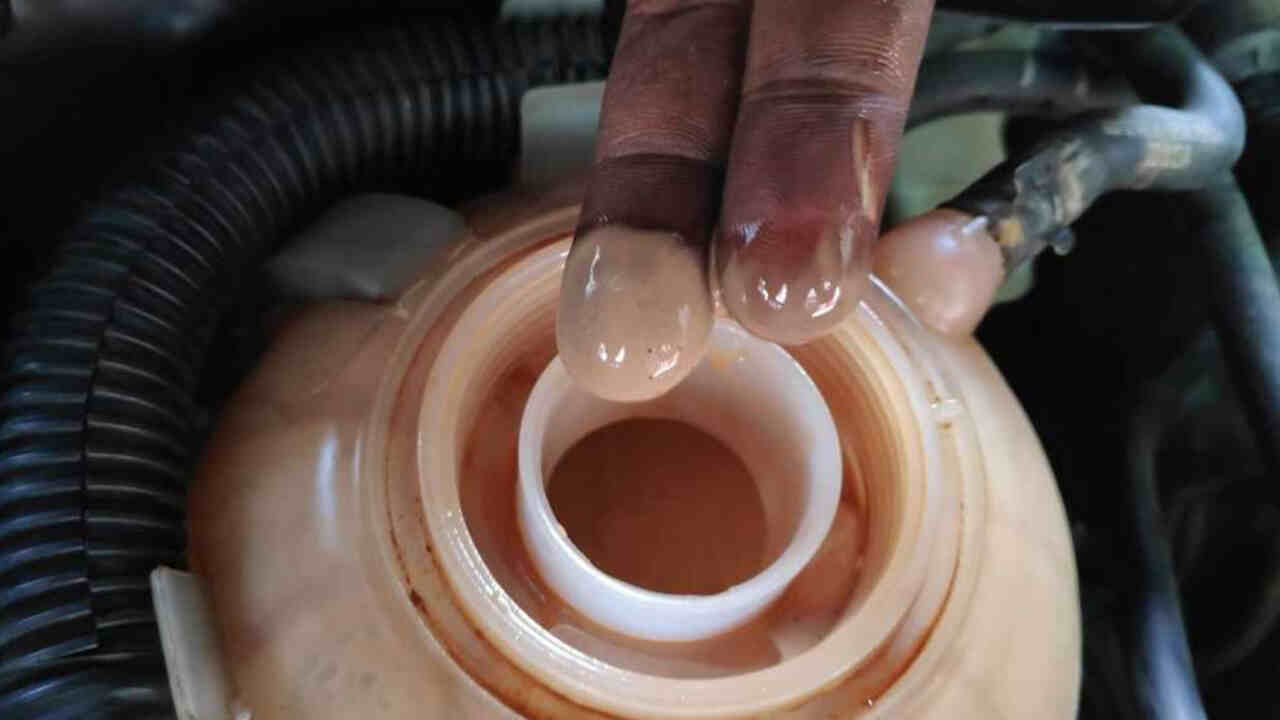
Milky power steering fluid indicates the presence of air or water in the system, suggesting contamination. This condition requires flushing the entire power steering system to remove the contaminants and restore proper fluid consistency and function. Milky color fluid can indicate potential issues with the power steering system of a vehicle. Symptoms of milky power steering fluid may include:
- Foamy or frothy fluid
- Difficulty steering
- Unusual noises (whining or groaning)
- Reduced steering responsiveness
- Discolored fluid (milky or cloudy appearance)
How To Check For Milky Power Steering Fluid?
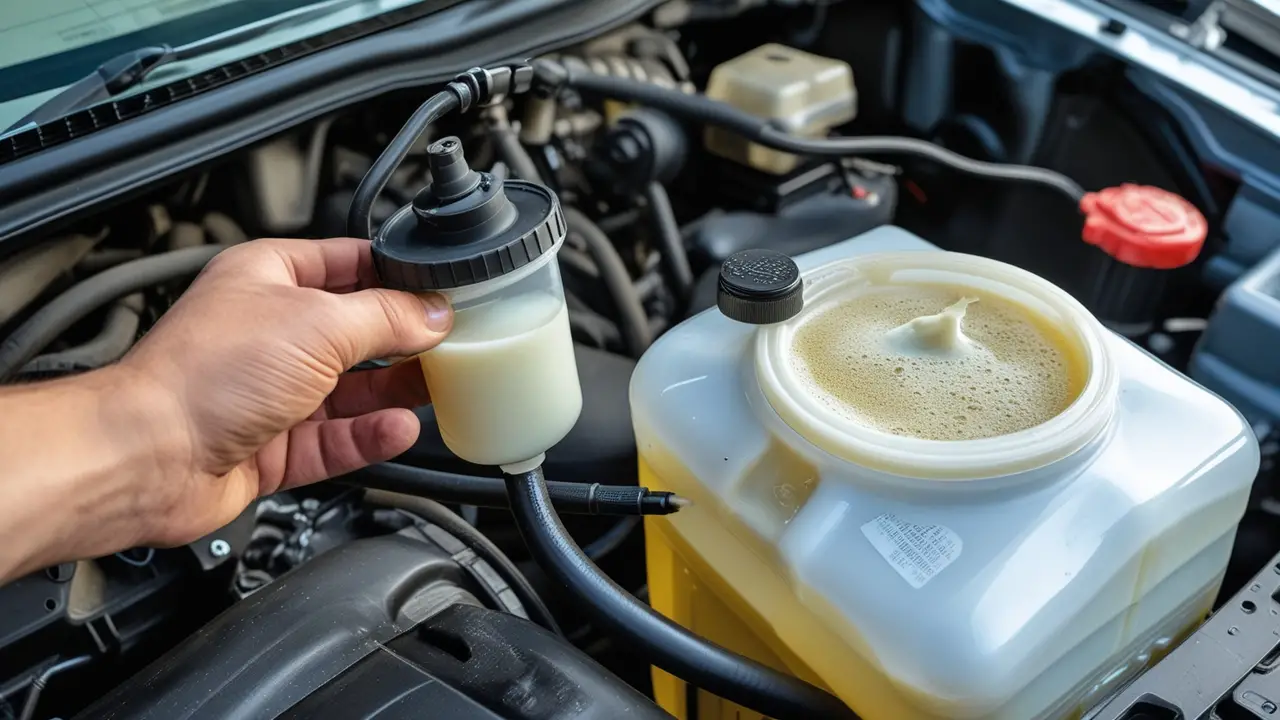
Checking for milky power steering fluid is an essential maintenance task to help you identify potential issues with your vehicle’s power steering system. To check for milky power steering fluid:
- Park your vehicle on a level surface
- Locate the power steering fluid reservoir under the hood
- Remove the cap of the reservoir and check the fluid level
- Milky or foamy fluid may indicate water contamination
- If the fluid appears milky, it is best to have it checked by a professional to determine the cause
5 Reasons with Solutions For Milky Power Steering Fluid
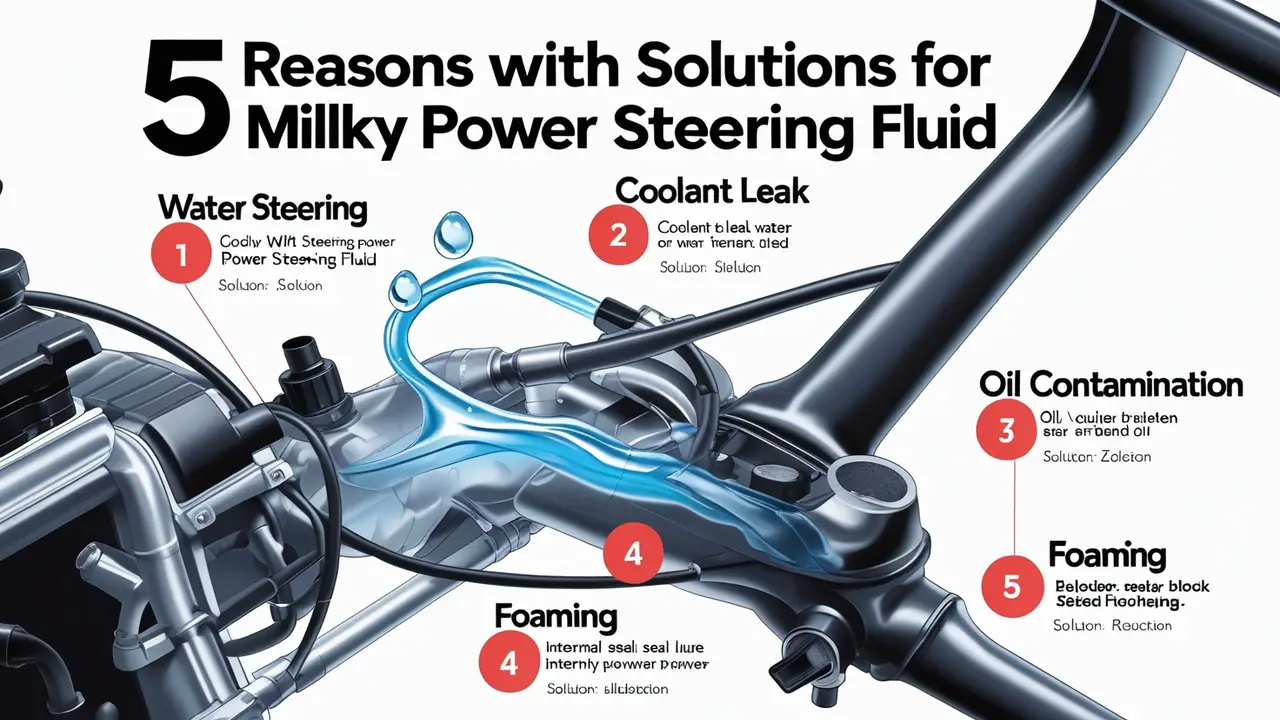
Milky power steering is a common issue that many drivers may encounter. There are several reasons why this fluid may appear milky, and it’s essential to understand the potential causes. Milky power steering fluid indicates the presence of air or water in the power steering system, which suggests contamination.
This can occur for various reasons, such as a leaking seal, a faulty power steering pump, or exposure to moisture. When the fluid becomes contaminated, it loses effectiveness, potentially damaging the power steering components. Here are six possible reasons:
Reason1: Water Contamination

Contamination of milky power steering fluid with water can occur for various reasons. Such as a damaged steering rack seal or condensation buildup. If left unresolved, this issue can impair steering performance and damage the power steering system.
To address this problem, it is essential first to identify the source of water contamination and repair any leaks or faulty components. Flushing the power steering system with fresh fluid and ensuring proper seals and connections can help prevent further water intrusion. Regular maintenance checks and prompt action to resolve any issues are crucial in maintaining optimal power steering function and avoiding costly repairs in the long run.
Reason2: Coolant Leak

Milky power steering fluid can often indicate a coolant leak into the system. Which can be a serious issue requiring immediate attention. This contamination can lead to inadequate lubrication and damage to the power steering components. Common reasons for this issue include a faulty power steering cooler, a leaking head gasket, or a cracked cylinder head.
To address this problem, the cooling system should be thoroughly inspected to identify the source of the leak. Repairs may involve replacing damaged components, such as the power steering cooler or gasket.
And flushing the system to remove any contaminated fluid. It is recommended to consult with a professional mechanic to diagnose and resolve milky power steering fluid issues promptly to prevent further damage and ensure optimal vehicle performance.
Reason3: Oil Contamination

Milky power steering fluid is often a result of oil contamination, typically caused by water entering the system. This can occur due to condensation buildup in the fluid over time or from a leak in the power steering system, allowing water to enter.
To address this issue, inspecting the entire power steering system for leaks and repairing damaged components is crucial. Flushing and replacing the contaminated fluid with fresh, manufacturer-recommended power steering fluid is essential to restore proper functionality. Regular maintenance checks and addressing any leaks promptly can help prevent oil contamination issues in the future, ensuring optimal performance of the power steering system.
Reason4: Internal Seal Failure
When it comes to Milky Power Steering Fluid, a milky or foamy appearance can indicate internal seal failure within the power steering system. This issue can arise for various reasons, such as water contamination, oil breakdown, or a faulty steering rack.
To address this problem, it is crucial first to identify the root cause of the seal failure. Solutions may include flushing and replacing the power steering fluid, repairing or replacing damaged seals.
And ensuring proper maintenance of the power steering system to prevent future issues. Seeking professional assistance from a certified mechanic or automotive expert is recommended to diagnose and resolve internal seal failures in Milky Power Steering Fluid effectively.
Reason5: Foaming
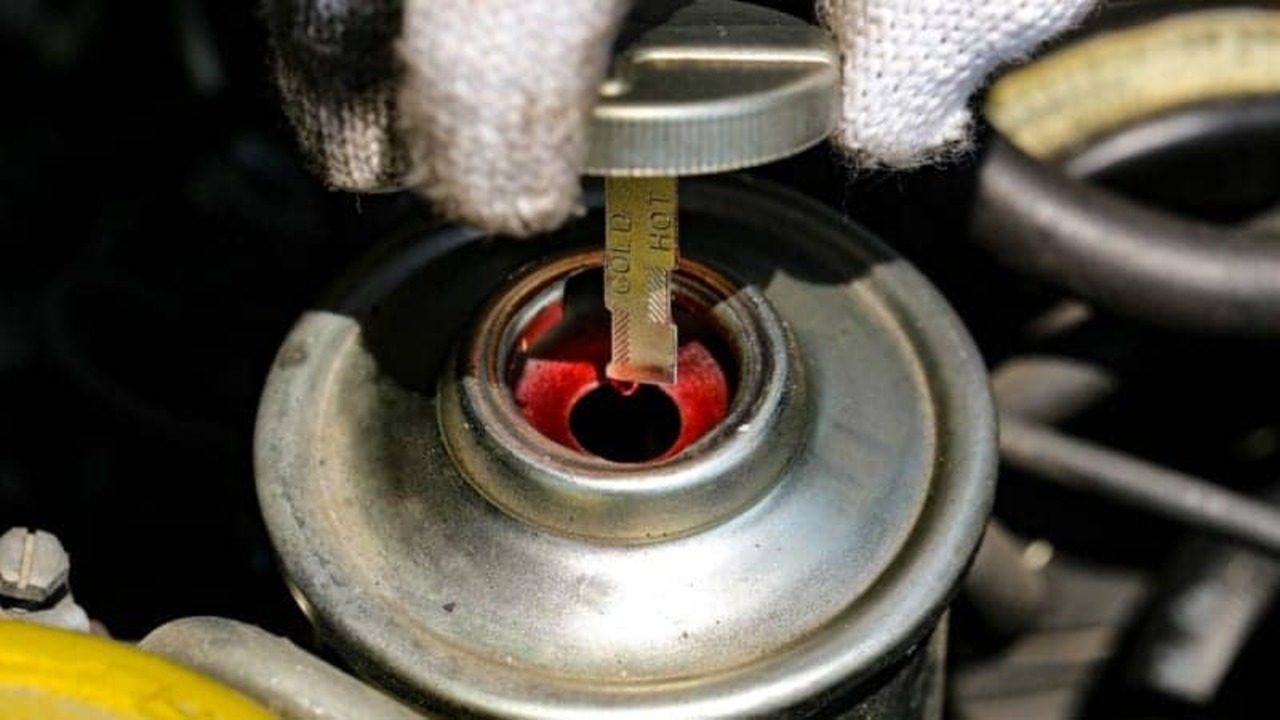
Milky foaming power steering fluid can cause concern and indicate potential issues within the power steering system. The presence of air bubbles in the fluid can lead to impaired performance and damage to the components over time.
Common reasons for power steering fluid turning milky and foaming include water contamination, a failing pump, or a leak in the system allowing air to enter. To address this issue, it is recommended to flush the power steering system, inspect for leaks, and replace the fluid with a high-quality product suitable for your vehicle’s specifications.
Seeking professional assistance from a certified mechanic is advisable to diagnose and rectify any underlying problems causing the milky appearance and foaming of the power steering fluid effectively.
How To Prevent Power Steering Fluid From Turning Milky?
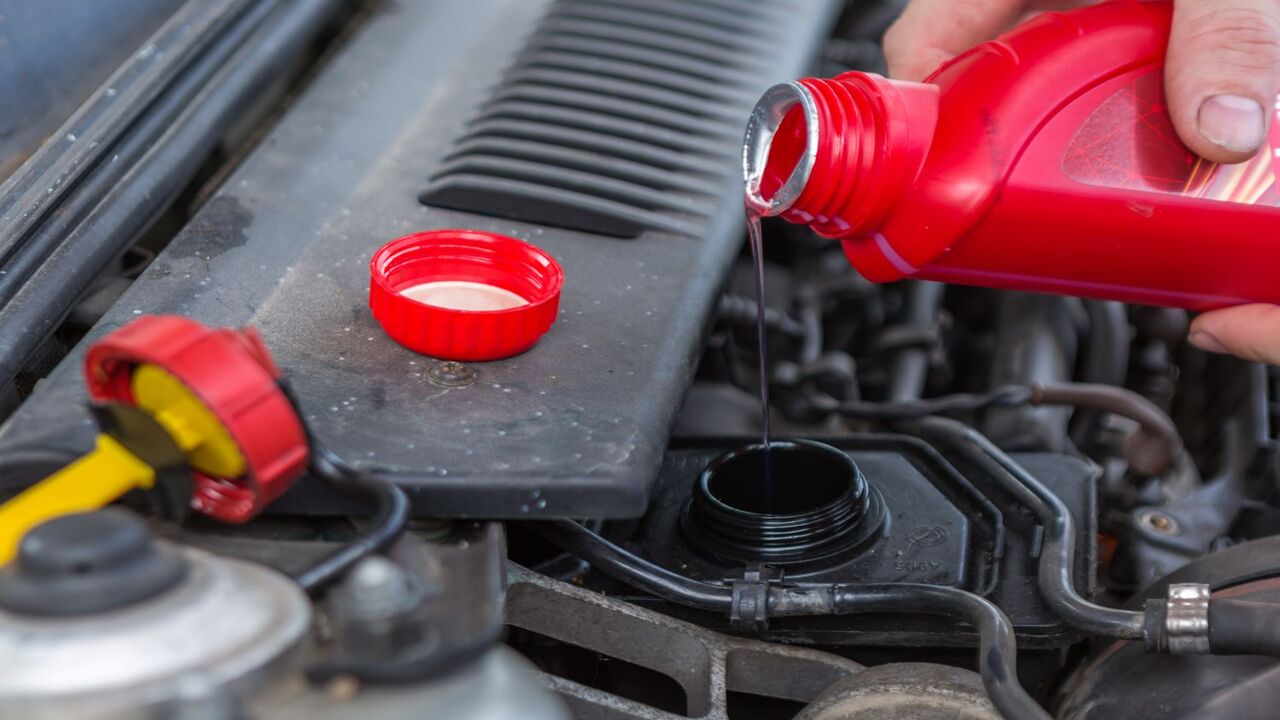
Preventing power steering fluid from turning milky is crucial for maintaining the optimal performance of your vehicle’s power steering system. Here are some key steps to help you prevent this issue:
- Regular Maintenance: Perform regular checks of your power steering fluid level and condition as part of your vehicle maintenance routine. This allows you to identify any issues early on before they escalate.
- Use Quality Fluid: Use high-quality power steering fluid recommended by your vehicle manufacturer. Vehicles may require different fluid types, so consult your owner’s manual or a trusted mechanic for guidance.
- Avoid Contamination: Keep the power steering fluid reservoir and surrounding area clean to prevent dirt, debris, or other contaminants from entering the system. Contaminated fluid can lead to issues like foaming and degradation.
- Address Leaks Promptly: If you notice any leaks in the power steering system, have them repaired promptly to prevent fluid loss and contamination. Leaks can allow water, coolant, or other fluids to enter the system, leading to milky fluid and potential damage.
- Maintain Cooling System: Ensure your vehicle’s cooling system functions correctly to prevent overheating the power steering fluid. Overheating can cause fluid degradation and compromise the performance of the power steering system.
- Avoid Aggressive Driving: Avoid aggressive driving maneuvers that strain the power steering system excessively, which can lead to overheating and foaming of the fluid. Drive smoothly and avoid sudden turns or jerky movements.
- Regular Inspections: Schedule regular inspections of your power steering system by a qualified mechanic. They can check for any signs of wear, leaks, or other issues that could lead to milky fluid or power steering problems.
Conclusion
Contaminated power steering fluid can often manifest as a milky color, indicating potential issues within the system that require attention. Addressing this problem promptly is crucial to maintaining the optimal performance of your vehicle’s power steering system.
By identifying and resolving the root cause of the milky appearance in your power steering fluid, you can ensure smooth operation and longevity for your vehicle. Regular maintenance and timely fluid checks prevent such issues from escalating further. Remember, proactive care goes a long way in keeping your car running smoothly.
FAQ:
1.What Does Bad Power Steering Fluid Look Like?
Lousy power steering fluid can be dark or cloudy, potentially indicating contamination or degradation. It may also show signs of foaming or air bubbles, which can affect the efficiency of the power steering system. Suppose the fluid appears discolored, dirty, or has a burnt smell.
In that case, replacing it with fresh, clean fluid is advisable to maintain optimal performance and prevent potential damage to the steering gear and other components.
2.What Does Foaming In The Power Steering Fluid Reservoir Indicate?
Foaming in the power steering fluid reservoir can indicate the presence of air bubbles in the system. Various issues, such as a leak in the hydraulic system, a problem with the power steering gear or pump, or using the wrong type of fluid, can cause this. It is important to promptly address foaming in the power steering fluid reservoir to prevent damage to the steering gear and other system components.
3.How To Change Milky Power Steering Fluid?
To change milky power steering fluid, first gather the necessary supplies – including hydraulic fluid, a water pump, engine coolant, steering gear, power steering reservoir, old fluid, new fluid, air bubbles, hose, a lock, fresh fluid, transmission fluid, brake fluid, as well as equipment for troubleshooting such as a power steering cooler.
Ensure the fluid level is correct, and inspect the return line for any issues. Replace the milky fluid with the appropriate fluid, being cautious not to introduce any air bubbles, and bleed the system if necessary.
4.Is The Rubber Boot On The Dipstick Broken?
The rubber boot on the dipstick protects the tip of the dipstick from damage and helps prevent fluid leaks. If the rubber boot is broken, it should be replaced to ensure proper functioning and prevent any potential issues with the hydraulic system components.
5.Can Milky Power Steering Fluid Affect Steering Performance?
Yes, Milky Power Steering Fluid can affect steering performance. Milky or foamy power steering fluid may indicate the presence of air bubbles in the system, which can compromise the effectiveness of the power steering mechanisms. It is recommended to check the fluid level, ensure the correct type of fluid is used, and address any issues, such as air bubbles in the system, to maintain optimal steering performance.
6.How To Tell If Power Steering Fluid Is Contaminated?
Check for discoloration, unusual odors, or debris to determine if the power steering fluid is contaminated. Contaminated fluid may have a milky appearance, a burnt smell, or contain particles that can clog the system.
It is essential to regularly inspect the hydraulic fluid, especially in components like the steering gear, power steering reservoir, and return line, to ensure optimal performance of the power steering system. If you suspect contamination, it is recommended to flush the system and replace the old fluid with new, clean fluid suitable for your vehicle’s specifications.
7.What Color Should The Power Steering Fluid Be?
Power steering fluid can come in various colors, such as clear, yellow, red, or even pink. The color of the power steering fluid can provide essential clues about the system’s condition. Ideally, the power steering fluid should be transparent or slightly yellowish, indicating clean and contaminant-free.
8.What Does It Mean When Your Power Steering Fluid Looks Like Chocolate Milk?
Ans: When the power steering fluid looks like chocolate milk, it usually indicates that water or coolant is mixed with the fluid. This could be a sign of a leaking radiator or a faulty seal in the power steering system.
9.Can I Drive With Milky Steering Fluid?
Ans: No, you should not drive with a milky power steering. Milky steering fluid typically indicates water or coolant contamination in the system, which can cause damage to the power steering components and potentially lead to steering failure.
10.Is Foamy Power Steering Fluid Bad?
Ans: Yes, experts typically consider foamy power steering fluid flawed. Foaming can be caused by various issues, such as air being introduced into the system or a malfunctioning power steering pump. Foamy fluid can lead to reduced power steering performance and potentially cause damage to the power steering components.